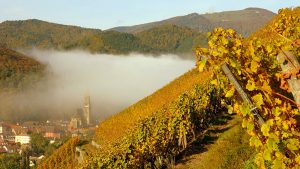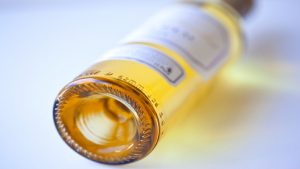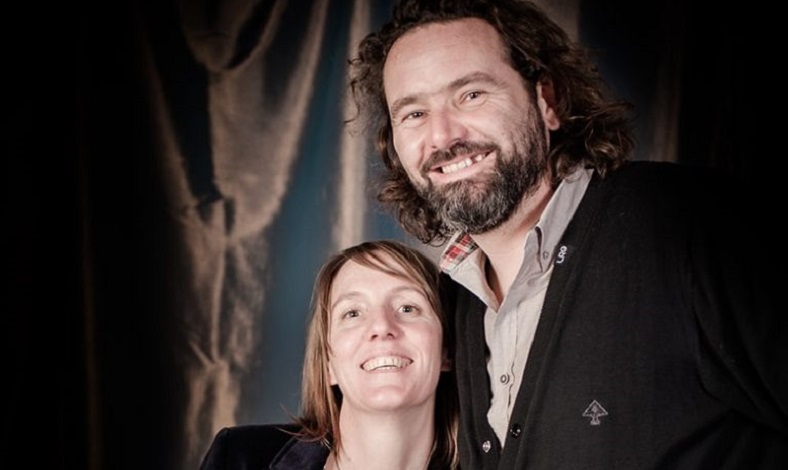
Lise and Bertrand Jousset are welcome additions to our network of producers, and we’re proud to be able to offer you their wines. Beautiful viticulture nurtured as naturally as possible, and work in the winery following the same philosophy…The result is simply superb.
Founded in 2004 in Montlouis-sur-Loire by Lise and Bertrand Jousset, the eponymous domain is found in the Montlouis appellation in Touraine. Bertrand had previously been in the military before pivoting to viticulture, and Lise was a sommelière working in Paris. As part of Bertrand’s oenology studies in Amboise, he gained experience at Domaine des Maisons Brûlées, following this with other properties in the Loire and even in Switzerland. “From the beginning, he immersed himself in the philosophy of organic, biodynamic and natural growing, this influenced him a lot, and he developed a great sensitivity for nature and the soils,” Lise tells us. Together, they wished to set themselves up in Montlouis and make their own wines. They began by renting vines in 2003, before eventually buying them in 2011. Whilst Bertrand does most of his work in the vineyards and the winery, Lise has made it her mission to promote and sell the wines, also getting involved in the vines when the harvest season comes around. They are helped by their small but mighty team of two employees.
They gradually expanded their vineyard before eventually cutting back again, realising that the work required in the vines was increasing. “We reduced the size of our vineyard in order to better cope with the threat of frost,” explains Lise, “we’ve had some very cold years in Montlouis as of late, so we’ve concentrated our vineyard in the hope of better protecting it.”
Vines grown organically and biodynamically
The vineyard, which now spans 8 hectares, is split into 27 parcels of both young and old vines (between 5 and 100 years old), largely planted with Chenin and completed by Chardonnay, Gamay and Grolleau. Each parcel has an identity of its own, with different terroirs and soils composed of clay, flint, and draining rocks. From the start, Lise and Bertrand have grown their vines organically (certified in 2008), as much to follow their ideological convictions as to achieve their goals: they wanted more than anything to produce authentic wines that express their origins. For this reason, they sought “living soils with real, microbial activity, a balanced plant and animal life in the parcels”. This was why they turned to natural products (sulphur, copper, organic manure), banning all fertilisers, weed killers and pesticides. The biodynamic method is something that has spoken to them for a long time, and they have gradually introduced it over a six-year period. They grouped together with other wine makers to pool investments in dynamiser machines and pulverisers, use the main biodynamic preparations on their vines, and follow the lunar calendar as far as possible.
Much work is carried out throughout the year to help the vines thrive, especially on certain parcels, with the couple having banned any mechanical aid – this is the case for the Clos aux Renard, where no tractors or machines are seen, only people and horses. “We noticed that this parcel gave very different juice from the rest of the property, the grapes had another dimension to them, which is why we want to go even further with the expression of this terroir.” They do the same for their parcels of younger vines, in order to avoid damaging them. The soils are worked on in the spring, notably to avoid too much grass around the foot of the vines (to limit humidity and the effects of frost). The harvests are, of course, carried out by hand.
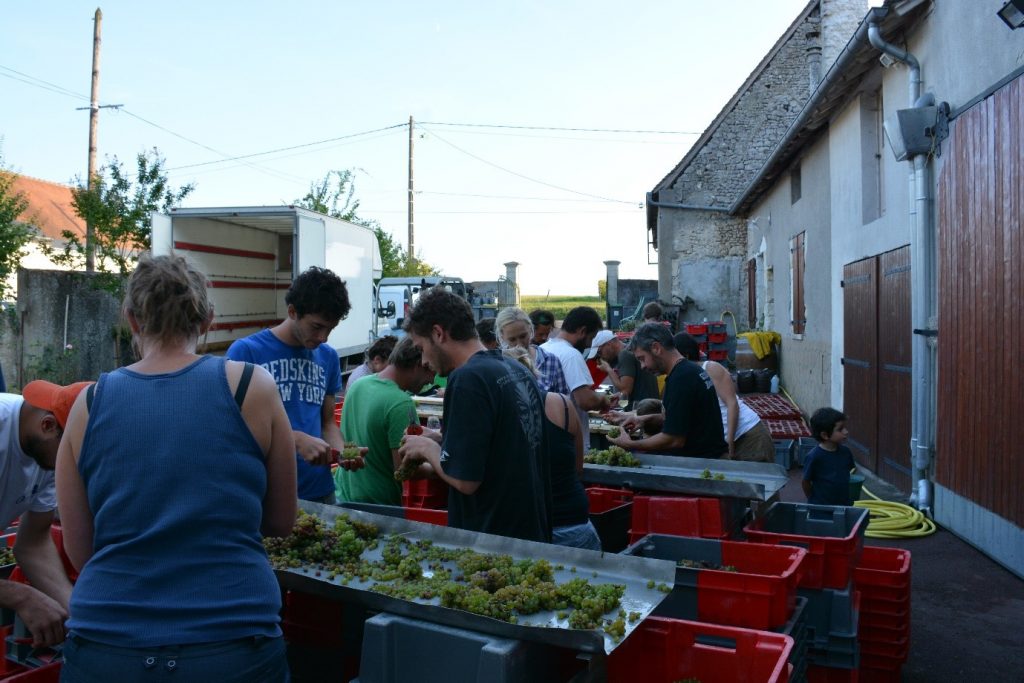
Low-intervention work in the winery
In the cellar, the work is, as you can imagine, very natural with little intervention, and the vinifications are done by parcel. The vinification passes from one stage to the next using only gravity, with the domain using equipment installed at three levels. The pressing stage is particularly slow and gentle. The red wines undergo carbonic maceration in order to maximise their fruit and freshness. Then comes the use of 225-, 400-, and 600-litre barrels, none of which have more than 10% wood in order to avoid marking the wines. Nothing is added during vinification, and the only product used is a small amount of sulphur. “We let our wines evolve naturally, with just a hint of sulphur added!” is what their website says. Lise adds “We don’t have a rule set in stone, nothing is systematic, so we can adapt to each vintage and each cuvée. For example, some cuvées have no sulphur added at all, whilst others have a little sulphur added once pressing has finished. We often use sulphur in homeopathic quantities (generally remaining under 40mg/L), meaning we put in just as much as we feel is totally necessary. Some of the warmer vintages, like 2018, haven’t given much acidity, making the juice more prone to oxidisation”. The most important thing for these wine makers is to always be transparent when it comes to their production methods. There is nothing harsh about their methods, and whilst the wines aren’t fined, they are often filtered.
Their philosophy? Let the terroirs express themselves
“We put a lot into the vines, there is a lot of work there, and this is because we want our terroirs to be expressed as deeply and precisely as they can. In the winery, the approach is quite the opposite, since we intervene as little as possible. Everything is done gently, often just using gravity, so no punching, and no stirring for the white cuvées. We don’t want to make our wines artificial in any way. We’d prefer that they stay as close as they can to the grapes they come from,” Lise explains.
Favourite food and wine pairings?
The sparkling rosé Rose à Lies pairs wonderfully with fresh strawberries and mint. Trait d’Union is a cuvée that complements dishes like veal, poultry in creamy sauce or foie gras. A dessert pairing might be a rhubarb or apricot tart.
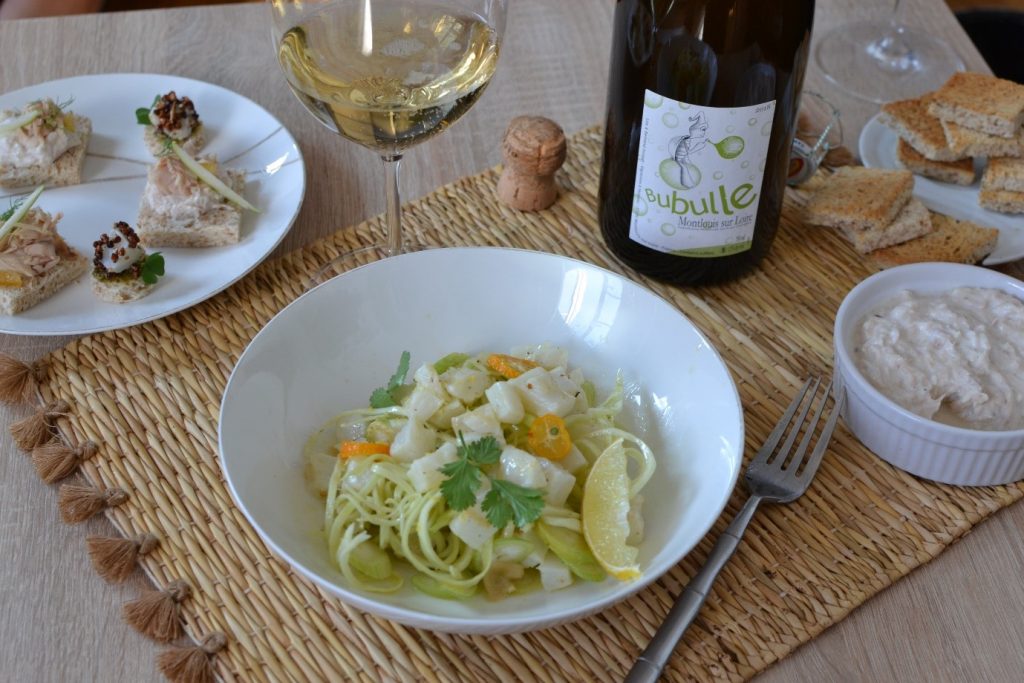
Wines from the domain
The domain makes more than ten cuvées, with each presenting an interpretation of Chenin and expressing its own identity, as is reflected in the diversity of the terroirs. These wines are frank, flavoursome and drinkable, generous whilst also being precise, carrying much freshness and complexity. We have been convinced by the style of the domain’s wine, but also by their strong philosophy! They seek to avoid all that is pretentious in the wine world, and this really comes through in what they produce. Here are some of their wonderful cuvées:
This is the domain’s sparkling wine, a Chenin vinified in barrels without additives, sulphur or dosage. On the nose, it is especially expressive, giving off aromas of white fruits as well as floral notes. On the palate, it is perfectly balanced between freshness and minerality on one side, and richness and density on the other, with a certain indulgence in its fruit. It is perfect for an aperitif or a meal alike, particularly if it involves a salty dish.
This cuvée comes from a parcel of old vines that are particularly well cared for, since all machinery has been banned here – all work is carried out by hand and with horses. The yields are particularly low, around 20 hectolitres/hectare. Vinified in 400-600 litre barrels, this single-parcel cuvée gives off floral aromas of acacia and exotic, fruity notes, making way for a palate that is at once fresh, lightly silky, dense and fruity. A gastronomic wine to be appreciated with dishes of white meat, scallops or fresh goats’ cheese.
This cuvée comes from eight different parcels where the soils are composed largely of clay and flint, and the vines range in age from 5 to 100 years old! It is vinified in 400- and 600-litre barrels for 10 months. To taste, this wine is fruity and juicy, flavoursome and generous, with a greatly drinkable profile. A good introduction to familiarise yourself with the style and philosophy of the domain. To be enjoyed alongside white meat or goats’ cheese.
Montlouis Premier Rendez-Vous Version Longue
A cuvée identical to the ‘Premier Rendez-Vous’ but with a maturation of 12 months – this cuvée is not filtered. A lovely wine to appreciate with fish or shellfish.
From a parcel of vines between 60 and 80 years old, this wine is a demi-sec produced using over-ripe grapes. It is vinified in used barrels and has a dosage of 23 grams of residual sugar per litre. This a superb, sweet wine that will pair nicely with foie gras or refined goats’ cheese.
Made from Gamay and Grolleau of 40-year-old vines, this natural, sparkling rosé, vinified in 400-litre barrels has less than 5 grams of residual sugar. To taste, it offers delicate aromas of red fruits mixed with floral notes. Its palate is round and fruited, with a certain tartness and definite flavour. This is an ideal wine for an aperitif or to accompany a red fruit dessert.
Vin de France Vilain Petit Chenin
A wine offering aromas of white fruits (apple, pear) with a lovely tension on the palate and a very light profile.


